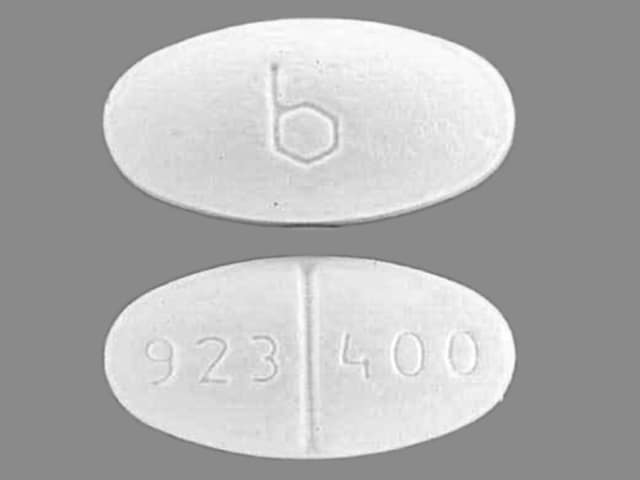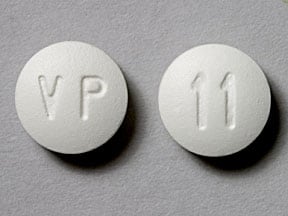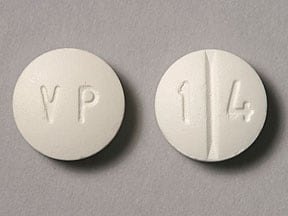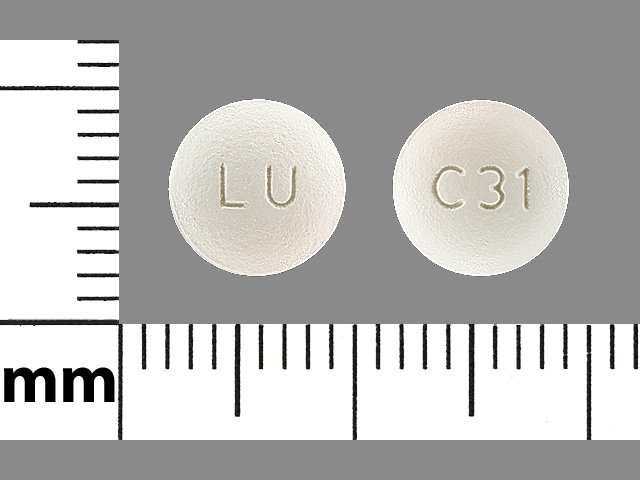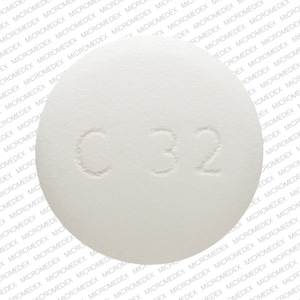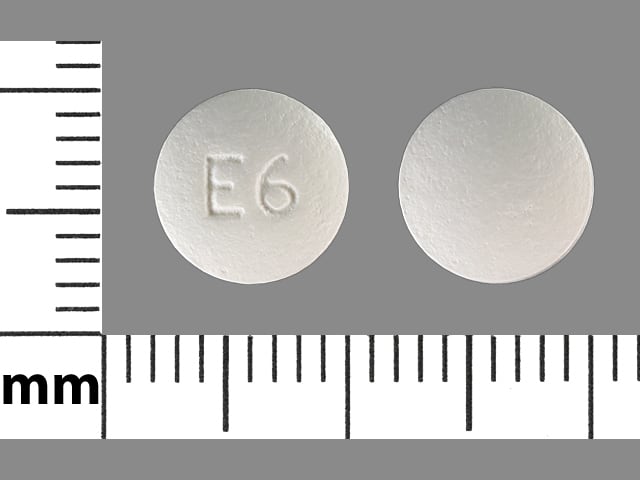Dosage Forms
Excipient information presented when available (limited, particularly for generics); consult specific product labeling.
Tablet, Oral, as hydrochloride:
Myambutol: 100 mg
Myambutol: 400 mg [scored]
Generic: 100 mg, 400 mg
Pharmacology
Mechanism of Action
Inhibits arabinosyl transferase resulting in impaired mycobacterial cell wall synthesis
Pharmacokinetics/Pharmacodynamics
Absorption
~80%
Distribution
Widely throughout body; concentrated in kidneys, lungs, saliva, and red blood cells
CSF:blood level ratio: Normal meninges: 0%; Inflamed meninges: 25%
Metabolism
Hepatic (20%) to inactive metabolite
Excretion
Urine (~50% as unchanged drug, 8% to 15% as metabolites); feces (~20% as unchanged drug)
Time to Peak
Serum: 2-4 hours
Half-Life Elimination
2.5-3.6 hours; End-stage renal disease: 7-15 hours
Protein Binding
20% to 30%
Use: Labeled Indications
Treatment of pulmonary tuberculosis in conjunction with other antituberculosis agents
Use: Off Label
Mycobacterium avium complex diseaseyes
Based on the Department of Health and Human Services (HHS) Guidelines for the Prevention and Treatment of Opportunistic Infections in HIV-Infected Adults and Adolescents, ethambutol, in combination with other appropriate antimycobacterial drugs, is effective and recommended for the treatment and chronic maintenance therapy (secondary prophylaxis) of disseminated MAC disease in HIV-infected patients.
Based on the American Thoracic Society (ATS) and Infectious Diseases Society of America (IDSA) Guideline for the Diagnosis, Treatment, and Prevention of Nontuberculosis Mycobacterial Disease, ethambutol, in combination with other appropriate antimycobacterial drugs, is effective and recommended for the treatment of MAC pulmonary and/or disseminated disease.
Nontuberculous mycobacterial disease (M. kansasii)byes
Data from a small prospective, single-arm study and a larger retrospective study support the use of ethambutol, in combination with clarithromycin and rifampin, in the treatment of susceptible Mycobacterium kansasii pulmonary disease Shitrit 2006, Griffith 2003. Additional trials may be necessary to further define the role of ethambutol in this condition.
Based on the ATS/IDSA Guideline for the Diagnosis, Treatment, and Prevention of Nontuberculous Mycobacterial Diseases ethambutol, in combination with rifampin and isoniazid, is effective and recommended for the treatment of susceptible M. kansasii pulmonary disease
Tuberculous meningitis (drug-susceptible)yes
Based on the American Thoracic Society (ATS)/Centers for Disease Control and Prevention (CDC)/Infectious Disease Society of America (IDSA) Treatment of Drug-Susceptible Tuberculosis guidelines, ethambutol, in combination with other antitubercular drugs, is effective and recommended for initial treatment of tuberculous meningitis.
Contraindications
Hypersensitivity to ethambutol or any component of the formulation; optic neuritis (risk vs benefit decision); use in young children, unconscious patients, or any other patient who may be unable to discern and report visual changes
Dosage and Administration
Dosing: Adult
Tuberculosis, pulmonary (drug-susceptible): Oral: Note: Always administer in combination with other antitubercular drugs.
ATS/CDC/IDSA drug-susceptible tuberculosis guideline recommendations (Nahid 2016):
Dosing: Doses should be based on lean body weight for patients within a normal weight range for their height (optimal dosing for obese patients has not been established):
Once-daily therapy: Note: The preferred frequency of administration is once daily; however, 5-days-per-week administration by directly observed therapy (DOT) is an acceptable alternative (Nahid 2016).
40 to 55 kg: 800 mg (14.5 to 20 mg/kg)
56 to 75 kg: 1,200 mg (16 to 21.4 mg/kg)
76 to 90 kg: 1,600 mg (17.8 to 21.1 mg/kg)
Three-times-weekly DOT:
40 to 55 kg: 1,200 mg (21.8 to 30 mg/kg)
56 to 75 kg: 2,000 mg (26.7 to 35.7 mg/kg)
76 to 90 kg: 2,400 mg (26.7 to 31.6 mg/kg)
Twice-weekly DOT:
40 to 55 kg: 2,000 mg (36.4 to 50 mg/kg)
56 to 75 kg: 2,800 mg (37.3 to 50 mg/kg)
76 to 90 kg: 4,000 mg (44.4 to 52.6 mg/kg)
Regimens: Treatment regimens for pulmonary tuberculosis consist of an initial 2-month phase of a 4-drug regimen that includes ethambutol, followed by a continuation phase consisting of a 2-drug regimen (does not include ethambutol) of an additional 4 to 7 months; ethambutol frequency and dosing differs depending on treatment regimen selected; consult current Drug-sensitive TB guidelines (Nahid 2016).
Tuberculous meningitis (drug-susceptible) (off-label use): See Tuberculosis, pulmonary for ethambutol dose; use ethambutol as part of a 4-drug initial phase for 2 months; a 2-drug regimen (does not include ethambutol) is continued for an additional 7 to 10 months (optimal duration not defined). Adjunctive corticosteroid therapy (eg, dexamethasone, prednisolone) tapered over 6 to 8 weeks is also recommended.
Mycobacterium avium complex (MAC) disease (off-label use): Oral:
Nodular/bronchiectatic disease: 25 mg/kg 3 times weekly in combination with a 3-times-weekly regimen of a macrolide (azithromycin or clarithromycin) and rifampin; continue treatment until patient is culture negative on therapy for 1 year. Note: Not recommended for severe or previously treated pulmonary disease (ATS/IDSA [Griffith 2007]).
Severe nodular/bronchiectatic or fibrocavitary disease: 15 mg/kg once daily in combination with daily macrolide (azithromycin or clarithromycin) and rifamycin (rifampin or rifabutin) therapy; continue treatment until patient is culture negative on therapy for 1 year. May also consider addition of 3 times weekly amikacin or streptomycin early in therapy. (ATS/IDSA [Griffith 2007]).
Disseminated disease in HIV-infected patients, treatment and chronic maintenance therapy: 15 mg/kg once daily in combination with a macrolide (azithromycin or clarithromycin); may discontinue when patient has completed ≥12 months of therapy, has no signs/symptoms of MAC disease, and has sustained (>6 months) CD4 count >100 cells/mm3 in response to ART. Note: Addition of a third or fourth drug should be considered for patients with advanced immunosuppression, high mycobacterial loads, or in the absence of effective ART (HHS [OI Adult 2017]).
Nontuberculous mycobacterial disease (M. kansasii) (off-label use): Oral: 15 mg/kg/day in combination with rifampin and isoniazid or clarithromycin for a duration to include 12 months of culture-negative sputum (ATS/IDSA [Griffith 2007]; Shitrit 2006).
Dosing: Geriatric
Refer to adult dosing.
Dosing: Pediatric
Tuberculosis, active treatment (excluding meningitis): Note: Recommendations often change due to epidemiology (resistance) and emerging information; consult CDC and WHO for current recommendations, as appropriate. Always use as part of a multidrug regimen. Any regimens using less than once daily dosing should administer dosing as directly observed therapy (DOT). Treatment regimens for pulmonary tuberculosis consist of an initial 2-month intensive phase of a 4-drug regimen, followed by a continuation phase of an additional 4 to 7 months of isoniazid and rifampin. Ethambutol frequency and dosing differs depending on treatment regimen selected; consult current drug-sensitive TB guidelines for detailed information (ATS/CDC/IDSA [Nahid 2016])
ATS/CDC/IDSA Recommendations (ATS/CDC/IDSA [Nahid 2016]):
Once daily or 5-times-weekly (DOT):
Infants, Children, and Adolescents <15 years, weighing <40 kg: Oral: 20 mg/kg/dose once daily or 5-times-weekly DOT, suggested range: 15 to 25 mg/kg/dose
Children and Adolescents <15 years weighing ≥40 kg or Adolescents ≥15 years: Note: Doses should be based on lean body weight for patients within a normal weight range for their height (optimal dosing for obese patients has not been established): Oral: Weight-band dosing for whole tablets:
40 to 55 kg: 800 mg (14.5 to 20 mg/kg/dose) once daily or 5-times-weekly (DOT)
56 to 75 kg: 1,200 mg (16 to 21.4 mg/kg/dose) once daily or 5-times-weekly (DOT)
76 to 90 kg: 1,600 mg (17.8 to 21.1 mg/kg/dose) once daily or 5-times-weekly (DOT)
Three-times-weekly DOT: Note: Although suggested dosing based on experience with twice-weekly regimen; experts suggest 3-times-weekly regimens are more effective than twice weekly DOT regimens; ethambutol-containing 3-times-weekly DOT may be used as part of an intensive phase; consult guidelines for specific information
Infants, Children, and Adolescents, weighing <40 kg: Oral: 50 mg/kg/dose 3-times-weekly
Children and Adolescents weighing ≥40 kg: Note: Doses should be based on lean body weight for patients within a normal weight range for their height (optimal dosing for obese patients has not been established); Oral: Weight-band dosing for whole tablets:
40 to 55 kg: 1,200 mg (21.8 to 30 mg/kg/dose) 3-times-weekly
56 to 75 kg: 2,000 mg (26.7 to 35.7 mg/kg/dose) 3-times-weekly
76 to 90 kg: 2,400 mg (26.7 to 31.6 mg/kg/dose) 3-times-weekly
Twice weekly DOT: Note: Regimen not generally recommended; do not use in HIV patients or those with smear-positive and/or cavitary disease. This therapy should only be used following completion of a 2-week intensive phase once daily (or 5-times-weekly) regimen. Missed doses result in the equivalent of once-weekly dosing which has been shown to be inferior and is associated with treatment failure, relapse, and development of drug resistance.
Infants, Children, and Adolescents <15 years, weighing <40 kg: Oral: 50 mg/kg/dose twice weekly
Children and Adolescents <15 years weighing ≥40 kg or Adolescents ≥15 years: Note: Doses should be based on lean body weight for patients within a normal weight range for their height (optimal dosing for obese patients has not been established); Oral: Weight-band dosing for whole tablets:
40 to 55 kg: 2,000 mg (36.4 to 50 mg/kg/dose) twice weekly
56 to 75 kg: 2,800 mg (37.3 to 50 mg/kg/dose) twice weekly
76 to 90 kg: 4,000 mg (44.4 to 52.6 mg/kg/dose) twice weekly
Mycobacterium avium complex (MAC) in HIV-exposed/-positive:
Treatment:
Infants and Children: Oral: 15 to 25 mg/kg/dose once daily; maximum dose: 2,500 mg/dose; in combination with clarithromycin (or azithromycin); for severe disease add rifabutin (HHS [pediatric OI 2016])
Adolescents: Oral: 15 mg/kg/dose once daily in combination with clarithromycin (or azithromycin) (HHS [adult OI 2016])
Chronic suppressive therapy: Infants and Children: Oral: 15 to 25 mg/kg/dose once daily; maximum dose: 2,500 mg/dose with clarithromycin (or azithromycin) with or without rifabutin (HHS [pediatric OI 2016])
Nontuberculous mycobacterial infection (eg, m. kansasii): Limited data available: Infants, Children, and Adolescents: 15 to 25 mg/kg/dose once daily; maximum dose: 2,500 mg/dose (Bradley 2016; Red Book [AAP] 2015)
Storage
Store at controlled room temperature of 20°C to 25°C (68°F to 77°F).
Ethambutol Images
Drug Interactions
Aluminum Hydroxide: May decrease the serum concentration of Ethambutol. Consider therapy modification
BCG (Intravesical): Antibiotics may diminish the therapeutic effect of BCG (Intravesical). Avoid combination
BCG Vaccine (Immunization): Antibiotics may diminish the therapeutic effect of BCG Vaccine (Immunization). Monitor therapy
Cholera Vaccine: Antibiotics may diminish the therapeutic effect of Cholera Vaccine. Management: Avoid cholera vaccine in patients receiving systemic antibiotics, and within 14 days following the use of oral or parenteral antibiotics. Avoid combination
Lactobacillus and Estriol: Antibiotics may diminish the therapeutic effect of Lactobacillus and Estriol. Monitor therapy
Sodium Picosulfate: Antibiotics may diminish the therapeutic effect of Sodium Picosulfate. Management: Consider using an alternative product for bowel cleansing prior to a colonoscopy in patients who have recently used or are concurrently using an antibiotic. Consider therapy modification
Typhoid Vaccine: Antibiotics may diminish the therapeutic effect of Typhoid Vaccine. Only the live attenuated Ty21a strain is affected. Management: Vaccination with live attenuated typhoid vaccine (Ty21a) should be avoided in patients being treated with systemic antibacterial agents. Use of this vaccine should be postponed until at least 3 days after cessation of antibacterial agents. Consider therapy modification
Adverse Reactions
Frequency not defined.
Cardiovascular: Myocarditis, pericarditis
Central nervous system: Confusion, disorientation, dizziness, hallucination, headache, malaise, peripheral neuritis
Dermatologic: Dermatitis, erythema multiforme, exfoliative dermatitis, pruritus, skin rash
Endocrine & metabolic: Acute gout attack, hyperuricemia
Gastrointestinal: Abdominal pain, anorexia, gastric distress, nausea, vomiting
Hematologic & oncologic: Eosinophilia, leukopenia, lymphadenopathy, neutropenia, thrombocytopenia
Hepatic: Abnormal hepatic function tests, hepatitis, hepatotoxicity (possibly related to concurrent therapy)
Hypersensitivity: Anaphylaxis, anaphylactoid reaction, hypersensitivity reaction (syndrome includes cutaneous reactions, eosinophilia, and organ-specific inflammation)
Neuromuscular & skeletal: Arthralgia
Ophthalmic: Color blindness, decreased visual acuity, optic neuritis, scotoma, visual disturbance (usually reversible with discontinuation; irreversible blindness has been described)
Renal: Nephritis
Respiratory: Pneumonitis, pulmonary infiltrates (with or without eosinophilia)
Miscellaneous: Fever
Warnings/Precautions
Concerns related to adverse effects:
- Hepatic toxicity: Has been reported, possibly due to concurrent therapy. Monitor liver function prior to and during treatment.
- Optic neuritis: May cause optic neuritis (unilateral or bilateral), resulting in decreased visual acuity or other vision changes. Discontinue promptly in patients with changes in vision, color blindness, or visual defects (effects normally reversible, but reversal may require up to a year). Irreversible blindness has been reported. Monitor visual acuity prior to and during therapy.
Disease-related concerns:
- Ocular disease: Evaluation of visual acuity changes may be more difficult in patients with cataracts, optic neuritis, diabetic retinopathy, and inflammatory conditions of the eye; consideration should be given to whether or not visual changes are related to disease progression or effects of therapy.
- Renal impairment: Use with caution in patients with renal impairment; dosage modification recommended. Monitor renal function prior to and during treatment.
Special populations:
- Pediatric: Use only in children whose visual acuity can accurately be determined and monitored (not recommended for use in children <13 years of age unless the benefit outweighs the risk).
Monitoring Parameters
Baseline and periodic (monthly) visual testing (Snellen test) and color discrimination tests (each eye individually, as well as both eyes tested together) in patients receiving >15 mg/kg/day; baseline and periodic renal, hepatic, and hematopoietic tests
Pregnancy
Pregnancy Risk Factor
C
Pregnancy Considerations
Adverse events were observed in animal reproduction studies. Ophthalmic abnormalities have been reported in infants born to women receiving ethambutol as a component of antituberculous therapy. Due to the risk of untreated tuberculosis to the mother and fetus, treatment is recommended when the probability of maternal disease is moderate to high. Ethambutol is one of the recommended agents to treat tuberculosis in pregnant women (Nahid 2016).
Patient Education
What is this drug used for?
- It is used to treat TB (tuberculosis).
Frequently reported side effects of this drug
- Nausea
- Vomiting
- Lack of appetite
- Loss of strength or energy
- Dizziness
- Headache
- Abdominal pain
Other side effects of this drug: Talk with your doctor right away if you have any of these signs of:
- Liver problems like dark urine, fatigue, lack of appetite, nausea, abdominal pain, light-colored stools, vomiting, or yellow skin.
- Sore throat
- Chills
- Confusion
- Sensing things that seem real but are not
- Joint pain
- Joint swelling
- Numbness or tingling of hands or feet
- Bruising
- Bleeding
- Vision changes
- Signs of a significant reaction like wheezing; chest tightness; fever; itching; bad cough; blue skin color; seizures; or swelling of face, lips, tongue, or throat.
Note: This is not a comprehensive list of all side effects. Talk to your doctor if you have questions.
Consumer Information Use and Disclaimer: This information should not be used to decide whether or not to take this medicine or any other medicine. Only the healthcare provider has the knowledge and training to decide which medicines are right for a specific patient. This information does not endorse any medicine as safe, effective, or approved for treating any patient or health condition. This is only a brief summary of general information about this medicine. It does NOT include all information about the possible uses, directions, warnings, precautions, interactions, adverse effects, or risks that may apply to this medicine. This information is not specific medical advice and does not replace information you receive from the healthcare provider. You must talk with the healthcare provider for complete information about the risks and benefits of using this medicine.
